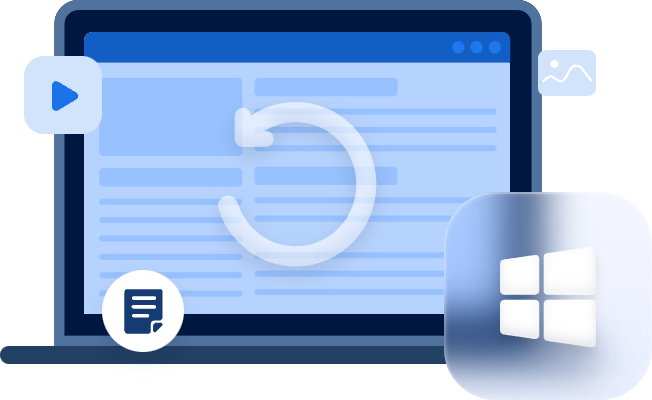How to Fix "This Device is Disabled Code 22"
Encountering the "This Device is Disabled Code 22" error can be frustrating, but fear not! This comprehensive guide walks you through the potential causes of this issue and provides you with six practical methods to bring your device back to life.
Imagine you're eager to use a critical device on your computer, only to be met with the dreaded "This Device is Disabled Code 22" error. Panic sets in, but worry not—this guide has your back. Let's delve into the reasons behind this issue and discover six reliable methods to get your device up and running.
Possible Reasons for "This Device is Disabled Code 22"
1. Outdated Drivers: If the drivers for the device are outdated or incompatible with the operating system, it can result in a Code 22 error.
2. Conflicting Drivers: The presence of conflicting or duplicate drivers can confuse the system, leading to the disabling of the device.
3. Registry Issues: Problems in the Windows registry, such as corruption or incorrect entries related to the device, may trigger the Code 22 error.
4. Hardware Problems: Physical issues with the hardware, such as a faulty connection or malfunctioning component, can cause the device to be disabled.
5. System File Corruption: Damage to critical system files required for device operation may lead to the device being disabled.
6. Software Conflicts: Interference from other installed software or security applications may disrupt the normal functioning of the device.
Six Methods to Resolve "This Device is Disabled Code 22"
1. Driver Updates
Keep your drivers up to date. Learn how to manually update drivers or use automatic tools for a hassle-free experience.
- Access Device Manager.
- Locate the disabled device.
- Right-click and choose "Update driver."
- Follow the on-screen instructions to update the driver.
2. Check for Conflicts
Identify conflicting software that might disable your device. Navigate through your system to locate and resolve conflicts.
- Open Device Manager.
- Locate the disabled device.
- Check for conflicts in the device's properties.
- Resolve IRQ conflicts or update drivers.
3. Registry Cleanup
Delve into the Windows Registry to clean up any entries causing disruptions. Exercise caution, and follow our step-by-step guide.
- Use a reputable registry cleaner tool (e.g., CCleaner).
- Download and install the tool.
- Run a scan to identify and repair registry issues related to the disabled device.
4. Reset Device Manager
Resetting the Device Manager can sometimes clear errors. Learn the correct steps to reset and reactivate your device.
- Press Windows key + R. Enter "devmgmt.msc" and press Enter.
- Access Device Manager and click on "Action" in the menu bar. Then, choose "Scan for Hardware Changes":
- Select "Scan for hardware changes." Wait for the scan and check if the disabled device is now enabled.
- Restart your computer to apply changes.
5. System Restore
If the error is recent, utilize System Restore to revert your system to a stable state.
- Open the Control Panel.
- Go to "Recovery" and choose "Open System Restore."
- Select a restore point before the issue occurred.
6. Hardware Check
Physically inspect your hardware for potential issues. Sometimes, a simple reconnection can do wonders.
- Power off the computer and disconnect the device.
- Inspect the physical connections for any damage or loose components.
- Reconnect the device securely.
- Power on the computer and check if the device is enabled.
MyRecover: Your Data's Savior
Accidents happen, and data loss is a common concern during troubleshooting. MyRecover, a powerful data recovery tool, ensures that no matter the outcome of your Code 22 resolution, your files remain safe. Explore its features and follow the operating steps for a seamless recovery process.
- Download and install MyRecover on your computer.
- Connect the affected external hard drive to your system.
- Launch MyRecover and select the ESDUSB drive for recovery.
- Initiate the scanning process and preview the recoverable files.
- Choose the files you want to recover and proceed with the restoration.
Conclusion: Empowered to Revive
With these methods and MyRecover in your toolkit, you're equipped to tackle the "This Device is Disabled Code 22" error head-on. No more frustration—just empowered troubleshooting and the assurance that your data is safeguarded.
FAQs
1. Can I recover files deleted during the Code 22 troubleshooting process?
Yes, with MyRecover, you can easily recover any files lost during the resolution steps.
2. What precautions should I take before attempting these methods?
Always back up your important data before performing any troubleshooting steps.
3. I need advanced technical skills for these solutions?
While some methods require basic technical knowledge, our guide provides step-by-step instructions for clarity.
4. Can outdated drivers cause Code 22?
Absolutely. Outdated drivers are a common cause of the "This Device is Disabled Code 22" error.
5. Is MyRecover compatible with various file types?
Yes, MyRecover supports a wide range of file types for comprehensive data recovery.

